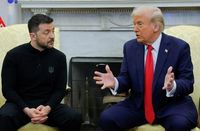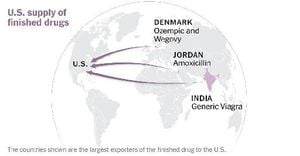On August 7, 2025, President Donald Trump stepped onto the White House lawn for a Purple Heart Day event, honoring members of the military wounded or killed in action. Just days later, his administration took a bold step with sweeping implications for millions of Americans: on August 10, the White House issued a new executive order directing federal regulators to expand access to alternative investments in 401(k) retirement plans. This move, which includes assets like cryptocurrency and shares of privately owned companies such as OpenAI and SpaceX, is already stirring debate across the financial and political spectrum.
According to Reuters, the order marks a significant departure from decades of retirement plan practices, which have traditionally favored low-fee, highly liquid investments like mutual funds. Now, the White House is inviting ordinary investors to consider riskier—and potentially more rewarding—options previously reserved for institutions and the ultra-wealthy. The rationale? Supporters argue these alternatives could offer higher returns and more diversified portfolios. Critics, however, are raising red flags about transparency, fees, and the very real possibility that many investors don’t fully grasp what they’re getting into.
“This is brand new; none of it has been stress-tested yet in a market shock or long-term selloff,” warned Christopher Bailey, director of retirement at Cerulli Associates, in an interview with Reuters. Bailey’s concerns are echoed by a chorus of industry professionals who worry that the risks of these alternative assets—especially their illiquidity and complex fee structures—haven’t been adequately communicated to the public.
Philitsa Hanson, head of product, equity and fund administration at Allvue Systems, put it bluntly: “I don’t think people are talking enough about the potential for higher fees.” She added, “The executive order raises more questions than answers. Someone will need to be very thoughtful about how these types of assets can be incorporated into 401(k) plans.”
So, what exactly is at stake? For starters, private equity funds—one of the primary alternative investments now being considered—are notorious for their “2 and 20” fee structure: 2% of assets under management, plus a hefty 20% of any profits. Compare that to the average mutual fund fee in a 401(k), which sits at just 0.26%, according to the Investment Company Institute. That’s a stark difference, and one that could eat away at retirement savings over time.
Dmitriy Katsnelson, deputy chief investment officer at Wealthspire Advisors, noted that the executive order could “reverse the trend of the last few decades.” He explained, “It’s been all about cutting fees, doing no harm. It’s going to take a while for people to come up with a framework to make this work and think about the risks.”
But fees aren’t the only sticking point. Transparency is another big issue. Jason Kephart, an analyst at Morningstar, pointed out that some alternative investment fees aren’t clearly spelled out and may even be hidden in footnotes. “They might be even underrepresenting the actual cost to the end investor, and I have a hard time seeing how plan sponsors are going to get comfortable with that,” he said. Kephart believes the new order will force the industry to shed more light on these costs, making them more transparent for everyday investors.
There’s also the matter of liquidity. Unlike mutual funds, which are traded daily and whose values can be checked at a glance, private assets are often illiquid and manually priced. As Hanson explained, “You’re asking systems designed for daily trades to support illiquid and sometimes manually priced assets. There’s a fundamental mismatch there.” For the average retirement saver, that means it could be harder to know what their investments are worth—or to access their money in a pinch.
All of this puts a new burden on asset managers and plan sponsors to educate their clients. “A typical retirement fund investor is not sitting there thinking about optimizing their portfolio and considering the impact of adding private assets to the mix on their risk or potential return,” Bailey observed. The implication is clear: without robust education and communication, many Americans could find themselves in over their heads.
Some industry leaders are already suggesting that alternative assets might only be suitable for certain investors. Blackstone President and Chief Operating Officer Jon Gray, for example, recently told analysts that private assets are “more appropriate for younger investors that have a longer investing horizon than for someone nearing retirement.” That’s a critical distinction, as the risks of illiquidity and market swings can be especially dangerous for those approaching the end of their working years.
Legal risks are also coming into sharper focus. A recent lawsuit involving Intel employees, who challenged the inclusion of private equity, hedge funds, and commodities in their retirement plans, was only dismissed after seven years of litigation. According to lawyers at Debevoise & Plimpton, most asset managers and plan sponsors simply don’t have the resources to weather such prolonged legal battles. They argue that regulators will need to provide some form of legal protection from investor lawsuits if the administration’s plan is to succeed.
Meanwhile, the Trump administration’s appetite for bold, unconventional moves isn’t confined to financial regulation. On August 9, a White House official revealed that President Trump is open to holding a high-stakes trilateral summit in Alaska with Russian President Vladimir Putin and Ukrainian President Volodymyr Zelenskiy. For now, the official said, the White House is planning a bilateral meeting with Putin at his request, but the possibility of a three-way summit signals a willingness to engage directly with two of the world’s most prominent adversaries.
While the proposed summit has yet to be scheduled, the announcement underscores the administration’s broader strategy of direct engagement and willingness to upend established norms—whether in global diplomacy or domestic financial policy. The potential for a Trump-Putin-Zelenskiy meeting on American soil would be a diplomatic spectacle, drawing global attention and possibly shifting the dynamics of the ongoing conflict in Ukraine.
Back home, the executive order on 401(k) alternatives is already forcing the financial industry to adapt. Alternative asset managers, eyeing the trillions of dollars and 90 million investors in employer-sponsored retirement plans, are under pressure to create new products with lower fees, greater liquidity, and more transparency. But as the dust settles, the big question remains: are ordinary investors ready for this new era of risk and reward?
As the country watches these developments unfold—both at home and abroad—one thing is certain: the Trump administration’s recent actions are challenging long-standing assumptions about how Americans invest for retirement and how the U.S. engages with the world. For now, the future of 401(k) plans and international diplomacy alike remains uncertain, but the stakes have rarely been higher.




